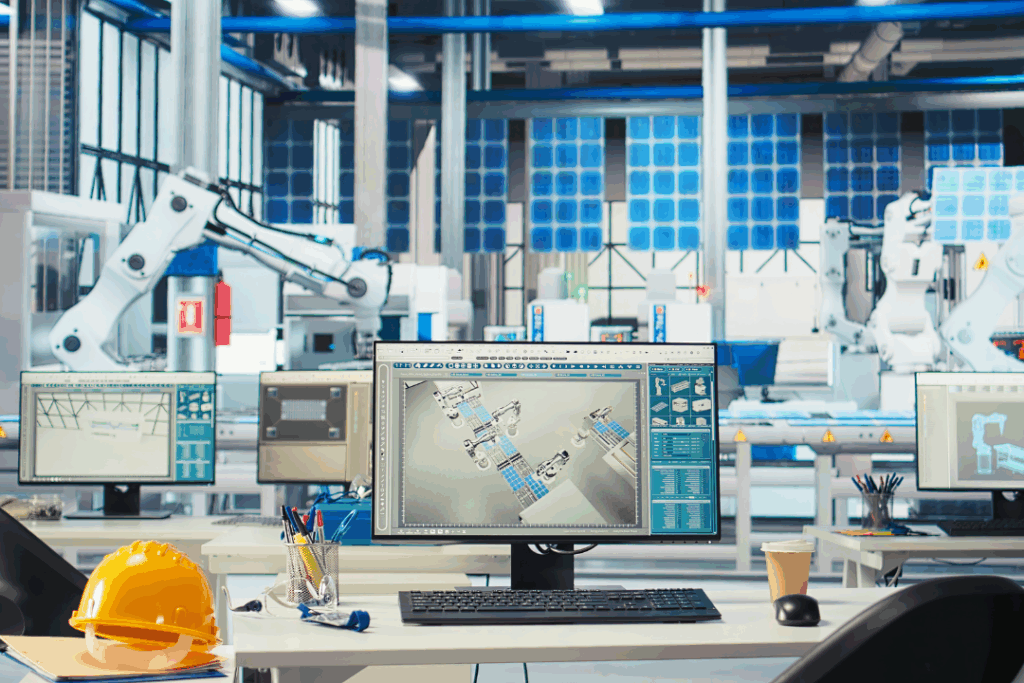- What if a product manufactured 50 years ago needs to be repaired or reproduced now?
- With reverse engineering, the design engineer starts with the final product and works through the design process in the opposite direction to arrive at the product design specification.
- During the process, vital information about the design concept and manufacturing methods is discovered and stored for future information.
In the absence of engineering drawings, designs, soft copy of the model of a product manufactured long ago or without necessary details, Reverse Engineering comes to action. Where there is no information about the dimensions of an object except for the physical item itself, the quickest and most reliable way to reproduce it will be by reverse engineering. From component to drawing, as well as getting the soft copy of the model, reverse engineering has proved its efficiency in the long run.
Advancement of Technologies
 Earlier, CMM machines were used to measure a specific component manufactured. It measured the geometry of physical objects by sensing discrete points on the surface of the object with a probe. CMMs typically specified a probe's position in terms of its displacement from a reference position in a three-dimensional Cartesian coordinate system (XYZ axes).
Earlier, CMM machines were used to measure a specific component manufactured. It measured the geometry of physical objects by sensing discrete points on the surface of the object with a probe. CMMs typically specified a probe's position in terms of its displacement from a reference position in a three-dimensional Cartesian coordinate system (XYZ axes).
But now, the usage of 3D laser machines has made the task easier. It uses laser light to probe the subject. 3D laser machines scan ALL THE data of the component manufactured. On that basis, the model can be made again and again. The modifications, the drawings can also be changed through advanced software technologies. After all the processes, the sample is ready to be prototyped and manufactured.
Prototyping
Prototyping is the sample manufacturing before going for mass production. Construction of the part or assembly is done using 3D technology. Visually and functionally evaluating an engineering product design is what rapid prototyping is. From manufacturing one product to manufacturing a large number of products, the process of reverse engineering to rapid prototyping helps to ease time and strain.
In this fast-moving modern-day consumer market, companies need to develop and introduce new products faster to remain competitive. Since faster product development and technology innovation are key to a company’s success, rapid prototyping becomes the most important element of new product development.
Integration of reverse engineering and rapid prototyping
 The advancement of technology has been the factor that has driven the integration of reverse engineering to rapid prototyping. Even 50 years ago, the drawings, the designs of the components were done on the drawing table, after which it went for manufacturing and eventual mass production.
The advancement of technology has been the factor that has driven the integration of reverse engineering to rapid prototyping. Even 50 years ago, the drawings, the designs of the components were done on the drawing table, after which it went for manufacturing and eventual mass production.
For that reason, input data was not available for those products. Engineers had to re-draw and re-design for the same product again and again. But nowadays, every data gets stored in the database for which all the processes have become so time-consuming. That is the advantage of reverse engineering.
Cost-effectiveness
 With less time and labour being spent during the measurement acquisition and design iteration steps, 3D laser scanning is substantially cost-effective than most other measuring technologies. Furthermore, 3D laser scanning is affordable because it can easily be outsourced to a company that specializes in 3D scanning services. This can reduce costs related to labour and operator training. The process of reverse engineering is particularly very cost-effective. Also, we can check the validity, rigidity, strength of the component through different types of software.
With less time and labour being spent during the measurement acquisition and design iteration steps, 3D laser scanning is substantially cost-effective than most other measuring technologies. Furthermore, 3D laser scanning is affordable because it can easily be outsourced to a company that specializes in 3D scanning services. This can reduce costs related to labour and operator training. The process of reverse engineering is particularly very cost-effective. Also, we can check the validity, rigidity, strength of the component through different types of software.
Another advantage presented by reverse engineering is in compressing the product development cycle. In a highly competitive global market, manufacturers constantly strive to shorten lead-times to bring a new product to market. With reverse engineering, a 3D model can be quickly captured in digital form and remodelled if necessary or exported for a variety of manufacturing methods.
The mindset of Indian companies to evolving processes
In a complicated, fast-moving world, innovation matters because it’s what brings customers to us. Indian companies have proven from time to time that they have a customer-centric approach that ensures innovativeness in everything they do. The right product innovation can not only save an organization from extinction but also help them sustain and grow by penetrating markets faster, connecting better with clients, seizing big opportunities and having an edge in the business competition.
As opposed to the Chinese manufacturers’ focus on copying, Indian manufacturers are emphasizing creating. Reverse engineering, thus as a technology, can help manufacturers a great in bringing modifications to the existing products for tomorrow.







